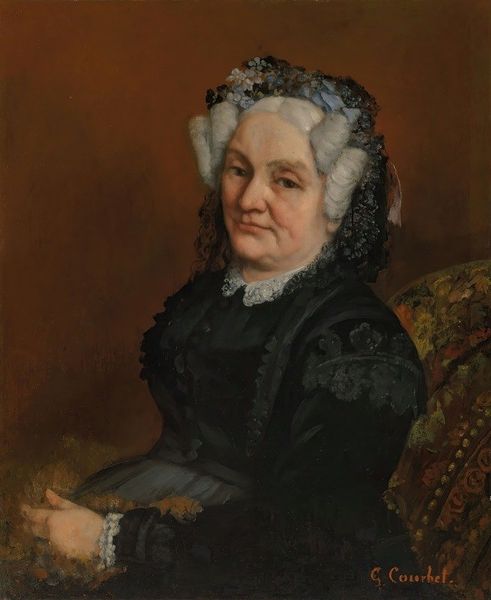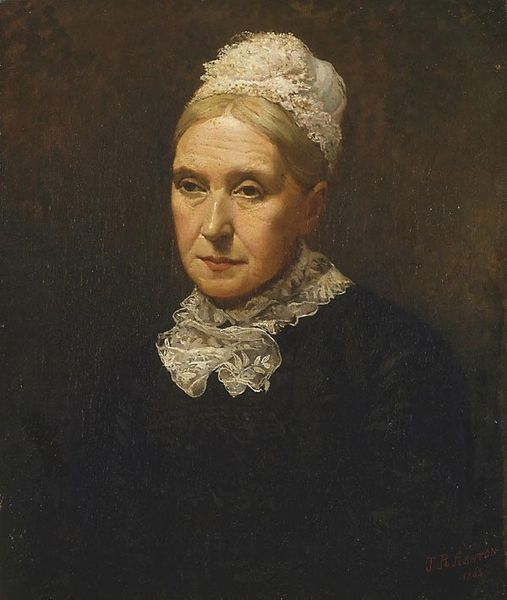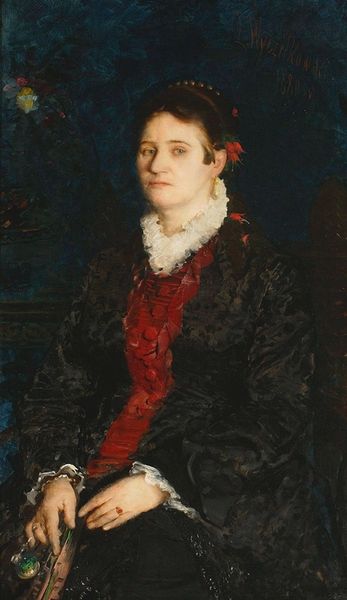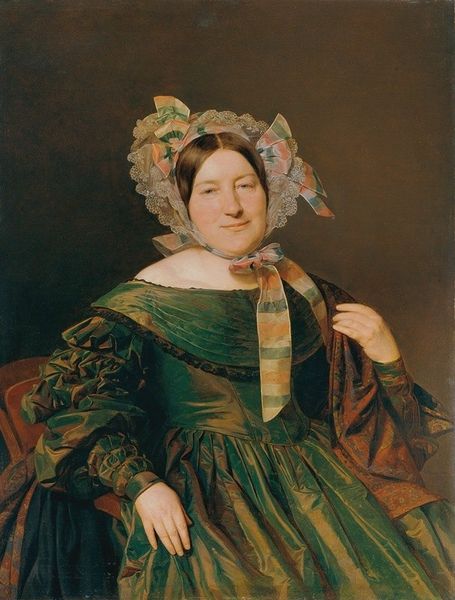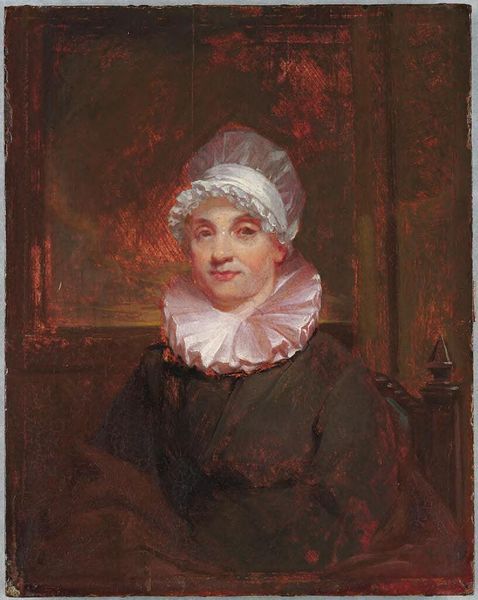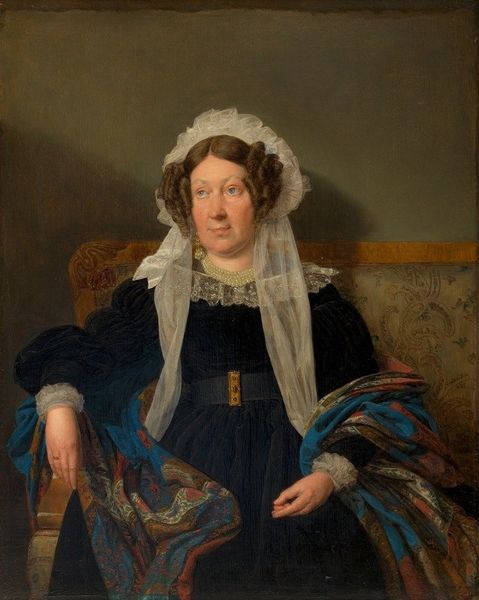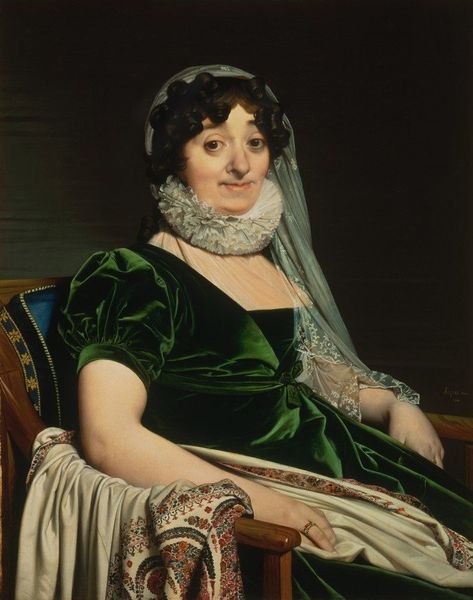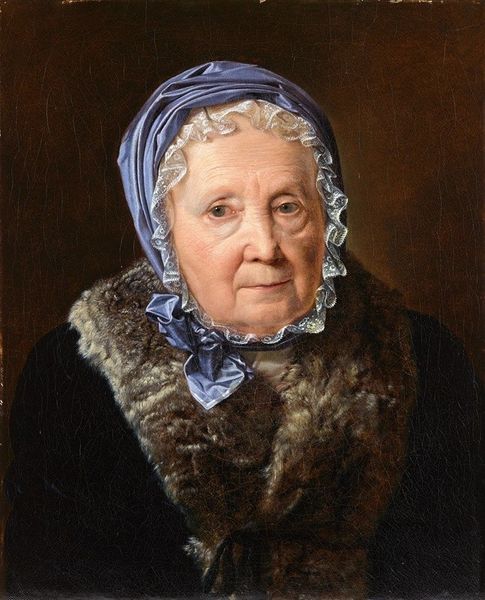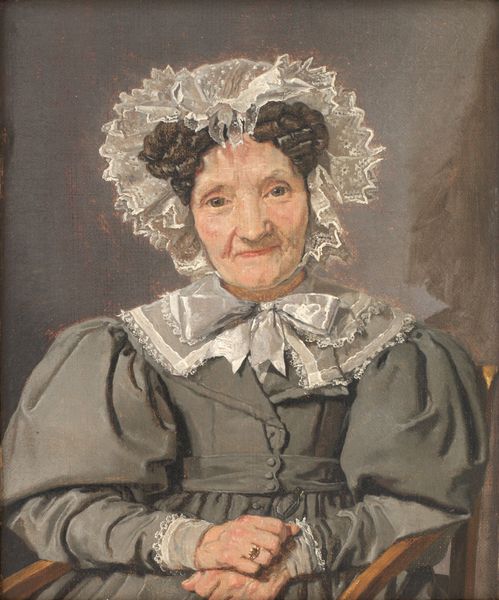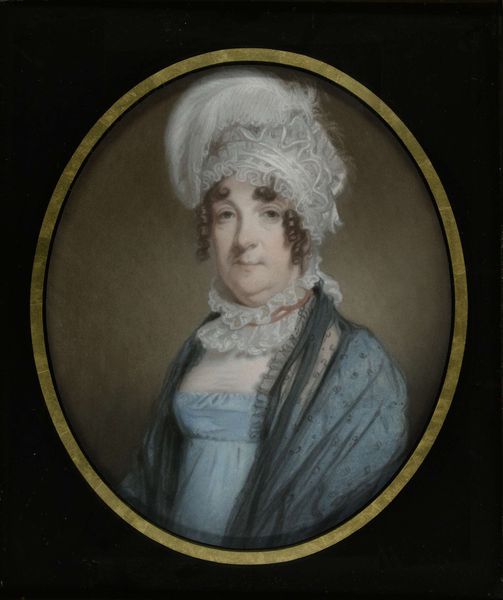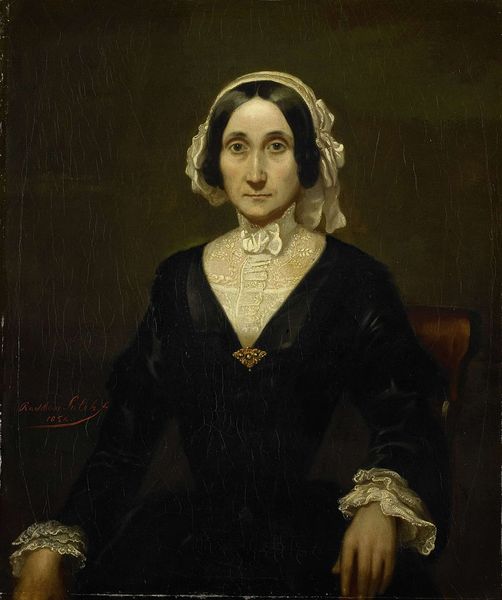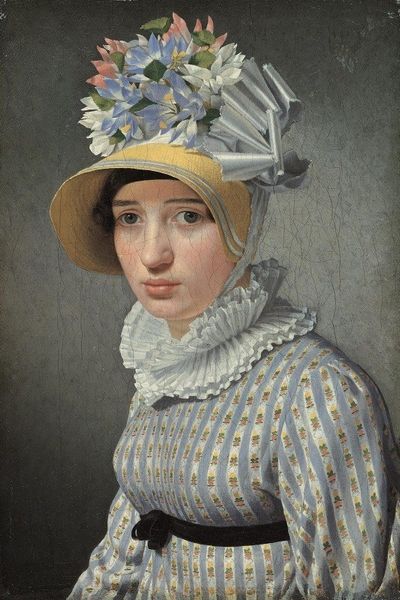
oil-paint
#
portrait
#
figurative
#
oil-paint
#
oil painting
#
romanticism
#
genre-painting
#
portrait art
#
realism
Copyright: Public Domain: Artvee
Editor: So here we have Ferdinand Georg Waldmüller's oil painting "Aloisia Eltz im Lehnstuhl" from 1834. The painting has a really serene feel, a calm, quiet domesticity, but something about her expression hints at a deeper story. What do you see in this piece? Curator: The image resonates on many levels. Firstly, consider the subject's position: seated, almost enveloped by the chair. What does that tell us about women in this era and how the expectations were to inhabit domestic spaces and be more subdued? Think about how this domesticity could simultaneously offer comfort but also constraint. Editor: That’s interesting. It almost feels like the chair is a throne but also a cage. Curator: Precisely. Waldmüller’s hyper-realistic style almost romanticizes this captivity. But, if we consider the socio-political context—the burgeoning feminist movements just beginning to stir—might we interpret Aloisia's seemingly demure posture as quiet defiance, a subtle resistance within the confines of her role? What do you make of her hands clasped in her lap, and the direct gaze that she gives? Editor: That makes me reconsider the work entirely. I initially saw her as passive. But now I’m seeing a controlled gaze, even a critical assessment in her eyes, in contrast to what society expected from her as a woman. And her hands could show resolve instead of timidity. Curator: Exactly! It highlights the importance of viewing artworks as active participants in societal dialogues. The image invites us to reflect critically on historical gender roles and societal power structures. Do we view it the same way after reframing our thoughts? Editor: Absolutely. It adds layers of complexity to what seemed, at first glance, to be a simple portrait. I'll definitely remember to look beyond the surface. Curator: Wonderful. It's in these reinterpretations that we find the ongoing relevance and power of art.
Comments
No comments
Be the first to comment and join the conversation on the ultimate creative platform.

